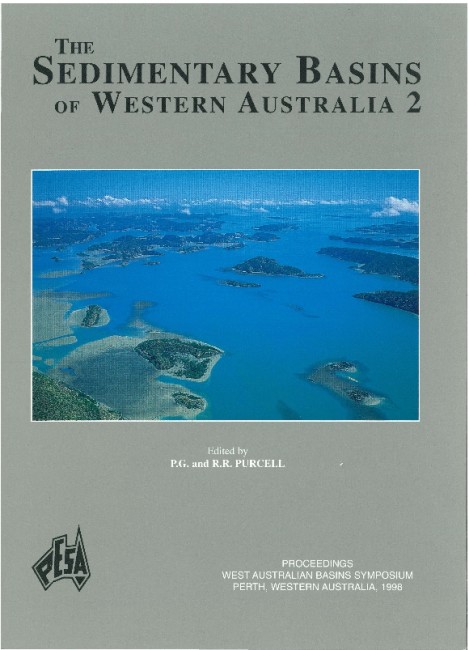Publication Name: The Sedimentary Basins of WA
Authors: Arthur J. Mory, Robert S. Nicoll and John D. Gorter
Publication Volume: 2
Date Published: December 1998
Number of Pages: 24
Reference Type: Book Section
Abstract:
Pre-Middle Devonian conodonts recovered from ten wells and drillholes in the Carnarvon Basin provide improved age control for, and are the basis for a revision of, the Silurian stratigraphy and depositional history in the basin: The lithologically distinctive siliciclastic unit at the base of the Dirk Hartog Group, in the Ajana Formation, is called the Marron Member (new name). The Yaringa Evaporite is re-named the Yaringa Formation in recognition of the limited portion of the basin in which evaporites dominate this unit. The uppermost unit of the Dirk Hartog Group is renamed the Coburn Formation.Age control is provided by six conodont faunas: a fauna of probable Early Ordovician Age from the middle part of the Ajana Formation in Wandagee 1 may be reworked and thus not age diagnostic. The upper, un-named, part of the Ajana Formation and the overlying Yaringa Formation contain a Silurian conodont fauna now recognised as being of Llandovery age (Telychian - Pterospathodus celloni Zone) based on the presence of Ozarkodina broenlundi Aldridge. The base of the Coburn Formation may be as old as early Wenlock age (Sheinwoodian -
Kockelella ranuliformis Zone). The middle to upper part of the Coburn Formation has an early Ludlow age (Gorstian- Kockelella stauros to Polygnathoides siludcus zones) based on the presence of Kockelella absidata, and the upper-most part has a fauna with Amydrotaxis n. sp. A which is thought to be of Pridoli age (Ozarkodina remscheidensis Zone). Conodonts have not been recovered from the overlying Faure Formation, but near the base of the overlying Kopke Sandstone a fauna of Ozarkodina pandora Murphy, Matti & Walliser 1981 has been recovered, indicating an Early Devonian age (Late Lochovian - lower Pedavis presavis Zone).
In the Late Ordovician? to Early Silurian (Llandovery) there was significant thinning of sediments toward the eastern and southern margins of the basin, and there may be a local break at the base of the Coburn Formation associated with a sea level low at about the Llandovery-Wenlock boundary. Conodont colour alteration patterns indicate that the Dirk Hartog Group has not passed beyond the oil generation window over most of the Gascoyne
Platform.


